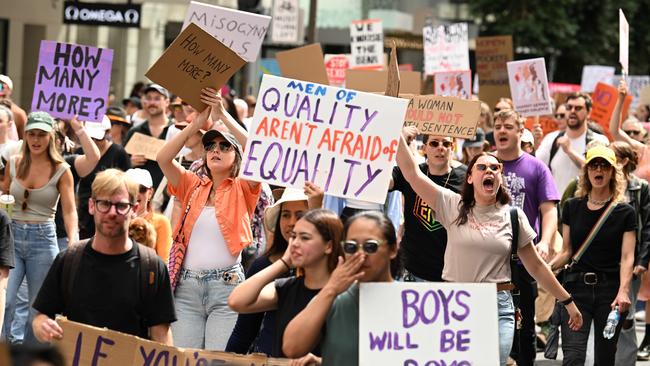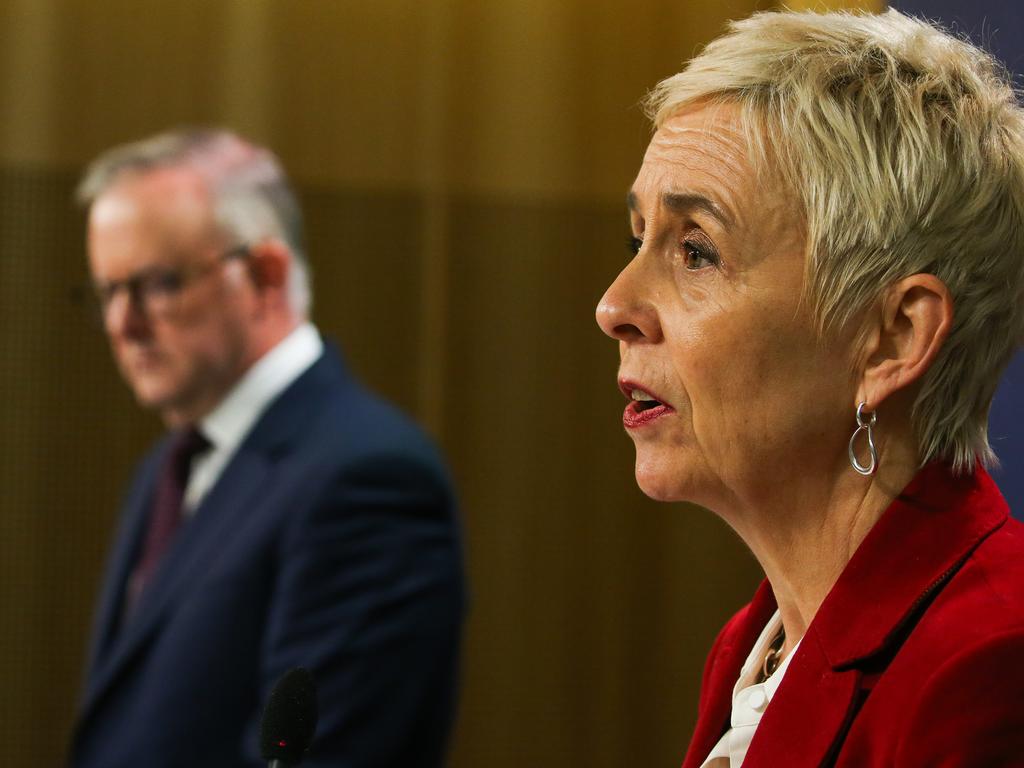Billions of dollars to tackle violence against women
Labor is targeting gendered violence after dozens of women died at the hands of men this year.

Labor has poured billions into stamping out gendered violence following dozens of women dying at the hands of men this year, in its first budget since unveiling a ten-year plan to achieve gender equality.
On top of a $925m commitment to set up a permanent program offering women up to $5000 to leave violent relationships and $1bn fund for crisis accommodation, the government revealed it would better resource the office for women, bolster legal aid and support research into domestic and family violence.
“Our nation has been rightly horrified by the shocking acts of gender-based violence committed by men against women and children this year,” Anthony Albanese said, in a joint statement with Jim Chalmers and Women’s Minister Katy Gallagher.
The budget includes a $44m injection into legal assistance centres across the country, $6m for local outreach, trauma-informed healthcare and $1.3m to set up a “rapid review” of prevention approaches.
A $3.9m investment into the office for women will allow for the hiring of more staff to focus exclusively on gendered violence.
It follows the release of Labor’s “working with women plan”, which includes five priority areas in which to achieve gender equality such as violence against women, health and representation.

As part of its goal to see more women in leadership positions, Labor revealed an ambition to have women occupy 50 per cent of chair and deputy chair roles on government boards.
“The Albanese Government is committed to making women’s lives safer, fairer and more equal. When an economy works for women, it also works for all Australians,” Senator Gallagher said.
“Our investments signal to Australia that we are serious about improving women’s lives and achieving gender equality in Australia.”
The budget also included a range of health measures, such as making period products cheaper and more accessible particularly for First Nations Women, funding training for health practitioners to better treat menopause and ensuring more timely diagnosis of endometriosis and other gynaecological conditions.
Amid a push to ensure equitable access to reproductive healthcare – including terminations – the government announced an expansion of ultrasound imaging request rights for nurses to help them support “before and after care for women who are accessing medical abortions”.
However, Labor did not succumb to pressure to respond in full to a year-old parliamentary report that called on governments to ensure all public hospitals provided access to terminations.
Federal and state Labor MPs have urged for the government to adopt all the committee’s recommendations, with sitting Queensland state Brittany Lauga calling for a return to the 2019 Labor policy that forced public hospitals to provide terminations by tying such services to their commonwealth funding.

In line with the Treasurer’s promise that the budget would be “good for mums”, the government committed to funding a range of programs including the Raising Children Network and the Fathering Project, on top of pumping $1.1bn into adding superannuation to Paid Parental Leave.
And in a bid to get more women into male dominated industries, the budget included a $55.6m investment into the Building Women’s Careers program and nearly $39m into its response to the Pathway to Diversity in STEM Review.
“We know there is still a lot of work to do, and this Budget and our future investments over the next decade will continue to invest in the priorities set out in Working for Women and ensure that this Government delivers real change for women,” Senator Gallagher said.
“The Albanese Labor Government is putting women and gender equality at the centre of Australia’s economic plan and is making women’s lives safer, fairer and more equal.”
Labor also pointed to its Commonwealth prac payments of nearly $400 a week to support eligible students in nursing, teaching and social work courses as a major boon for women, who make up the majority of the students in those sectors.






